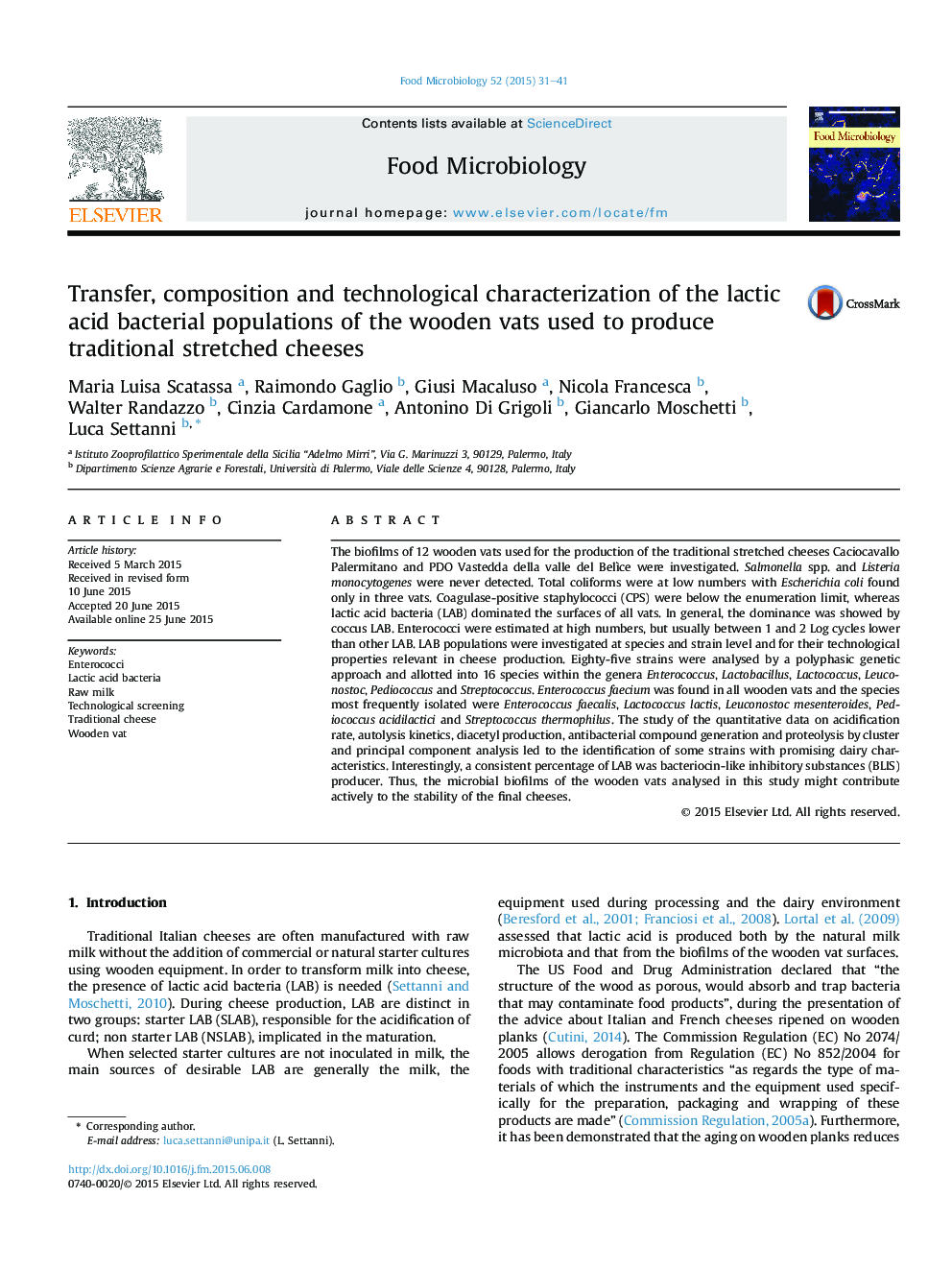| کد مقاله | کد نشریه | سال انتشار | مقاله انگلیسی | نسخه تمام متن |
|---|---|---|---|---|
| 6288435 | 1616248 | 2015 | 11 صفحه PDF | دانلود رایگان |
عنوان انگلیسی مقاله ISI
Transfer, composition and technological characterization of the lactic acid bacterial populations of the wooden vats used to produce traditional stretched cheeses
ترجمه فارسی عنوان
انتقال، ترکیب و ویژگی های تکنولوژیکی جمعیت باکتری های اسید لاکتیک از وات چوبی که برای تولید پنیر سنتی کشش استفاده می شود
دانلود مقاله + سفارش ترجمه
دانلود مقاله ISI انگلیسی
رایگان برای ایرانیان
کلمات کلیدی
انتروکوک، باکتری اسید لاکتیک، شیر خام، غربالگری تکنولوژیک، پنیر سنتی وات چوبی،
موضوعات مرتبط
علوم زیستی و بیوفناوری
علوم کشاورزی و بیولوژیک
دانش تغذیه
چکیده انگلیسی
The biofilms of 12 wooden vats used for the production of the traditional stretched cheeses Caciocavallo Palermitano and PDO Vastedda della valle del Belìce were investigated. Salmonella spp. and Listeria monocytogenes were never detected. Total coliforms were at low numbers with Escherichia coli found only in three vats. Coagulase-positive staphylococci (CPS) were below the enumeration limit, whereas lactic acid bacteria (LAB) dominated the surfaces of all vats. In general, the dominance was showed by coccus LAB. Enterococci were estimated at high numbers, but usually between 1 and 2 Log cycles lower than other LAB. LAB populations were investigated at species and strain level and for their technological properties relevant in cheese production. Eighty-five strains were analysed by a polyphasic genetic approach and allotted into 16 species within the genera Enterococcus, Lactobacillus, Lactococcus, Leuconostoc, Pediococcus and Streptococcus. Enterococcus faecium was found in all wooden vats and the species most frequently isolated were Enterococcus faecalis, Lactococcus lactis, Leuconostoc mesenteroides, Pediococcus acidilactici and Streptococcus thermophilus. The study of the quantitative data on acidification rate, autolysis kinetics, diacetyl production, antibacterial compound generation and proteolysis by cluster and principal component analysis led to the identification of some strains with promising dairy characteristics. Interestingly, a consistent percentage of LAB was bacteriocin-like inhibitory substances (BLIS) producer. Thus, the microbial biofilms of the wooden vats analysed in this study might contribute actively to the stability of the final cheeses.
ناشر
Database: Elsevier - ScienceDirect (ساینس دایرکت)
Journal: Food Microbiology - Volume 52, December 2015, Pages 31-41
Journal: Food Microbiology - Volume 52, December 2015, Pages 31-41
نویسندگان
Maria Luisa Scatassa, Raimondo Gaglio, Giusi Macaluso, Nicola Francesca, Walter Randazzo, Cinzia Cardamone, Antonino Di Grigoli, Giancarlo Moschetti, Luca Settanni,
